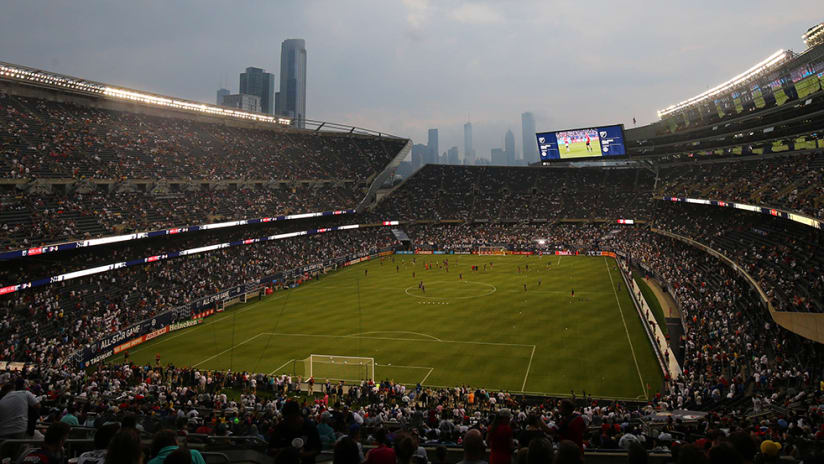BRIDGEVIEW — As important as the Chicago Fire’s return to Soldier Field may prove to be for the future of the club, its leaders recognize that a bigger, better-located stadium isn’t going to fill itself. Fans need to be given a reason to come, and that’s going to take work.
“There’s nothing I can say…The fans have heard it and they can see through it,” team President and General Manager Nelson Rodriguez told reporters of his ability to restore confidence in both him and the club. “All I can promise is to do my absolute best and for you to know that I bleed as you bleed. You deserve more, we’re going to keep working to deliver.”
The club hopes to reshape the fan experience and maximize impact of moving back downtown. Rodriguez outlined several strategies for such improvement, including season tickets prices as low as $15 per game and flexible, multi-game ticket plans.
“But it also always comes back to the performance of the team,” he conceded.
The Fire and Rodriguez know this first-hand. In the best of the club’s four seasons under Rodriguez and head coach Veljko Paunovic’s leadership, when they finished with the third best record in MLS in 2017, the Fire averaged 17,383 fans at SeatGeek Stadium (the best since the club’s inaugural season). Across the three other seasons, they averaged 14,244 per game, with a low of 12,324 in 2019.
Despite this, the Fire aren’t intimidated by the task of making Soldier Field and its 61,500 seats feel full. On several occasions since becoming the sole owner of the club in July, Joe Mansueto has pointed to the potential soccer has shown to fill the stadium: the Gold Cup final between the United States and Mexico and a friendly between Liga MX teams Club América and Chivas were both sell-outs. The common denominator of those two matches is that the stands were filled by Latino soccer fans, a community Rodriguez said the club needs to make a greater effort to engage with.
“There’s no substitute for being in the community more often and to speaking with the Hispanic population, and all of our populations, more directly,” Rodriguez said. “We’re making direct efforts to appeal to that audience in their way and in their language.”
To that end, the club has made additions to both its communications and digital content teams in recent weeks with a focus on appealing more directly to the Latino community. The club already makes efforts to serve both the English and Spanish-speaking fanbases at its games, including all PA announcements being made in both languages as well as bi-lingual signage and promotional materials.
Beyond filling the seats in the stadium, there is the issue of the club’s quest to find a meaningful foothold in the Chicago sports media landscape. The club signed a deal in 2017 to host its local broadcasts on ESPN+ after a previous deal with Comcast Sportsnet (now NBC Sports Chicago) expired. The current deal runs through next season, and Rodriguez wants to ensure the club makes the best decision for its interests, whether or not that’s on traditional television.
“What we’re looking for is a partner who is vested in helping us grow the sport and, obviously, helping grow our brand,” he said, adding that the previous deal with NBC Sports did not met those expectations.
In the end, time will tell whether Rodriguez and his staff can regain the faith and trust of a fanbase whose have experienced some lean years recently. Last Tuesday’s official announcement of the move felt momentous for the club, but it was only the first of what will need to be many memorable days if the Fire are to reach their new, loftier goals.
“All of us have a stake in the future and in the success of this club,” Rodriguez said. “What I most took was the excitement, the palpable feeling that Chicagoans are ready to embrace this club unconditionally and to showcase its spirit and our city to the rest of MLS and to the greater football world.”













